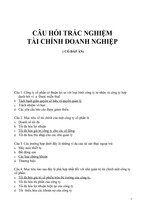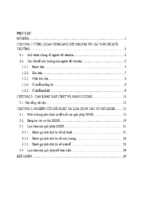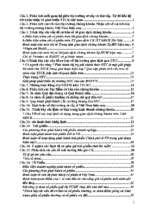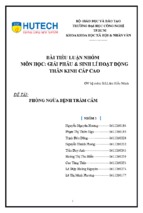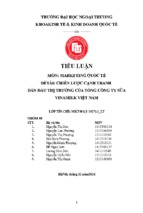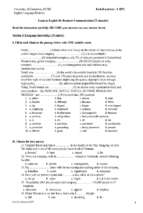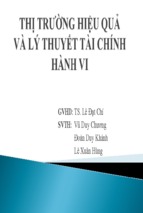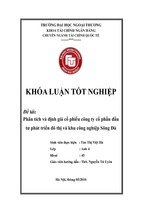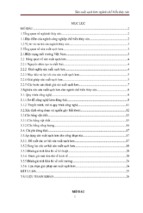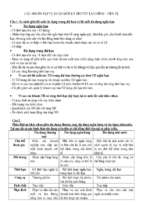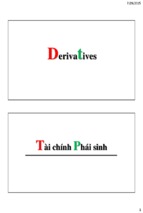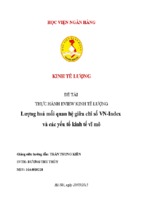This page intentionally left blank
Principles of Econometrics
Fourth Edition
R.Carter Hill
Louisiana State University
William E. Griffiths
University of Melbourne
Guay C. Lim
University of Melbourne
John Wiley & Sons, Inc.
VP & Publisher
George Hoffman
Acquisitions Editor
Lacey Vitetta
Project Editor
Jennifer Manias
Senior Editorial Assistant
Emily McGee
Content Manager
Micheline Frederick
Production Editor
Amy Weintraub
Creative Director
Harry Nolan
Designer
Wendy Lai
Senior Illustration Editor
Anna Melhorn
Associate Director of Marketing
Amy Scholz
Assistant Marketing Manager
Diane Mars
Executive Media Editor
Allison Morris
Media Editor
Greg Chaput
This book was set in 10/12 Times Roman by MPS Limited, a Macmillan Company, Chennai, India, and printed
and bound by Donnelley/Von Hoffmann. The cover was printed by Lehigh-Phoenix.
1
This book is printed on acid-free paper. *
Copyright # 2011 John Wiley & Sons, Inc. All rights reserved. No part of this publication may be reproduced,
stored in a retrieval system or transmitted in any form or by any means, electronic, mechanical, photocopying,
recording, scanning or otherwise, except as permitted under Sections 107 or 108 of the 1976 United States
Copyright Act, without either the prior written permission of the Publisher, or authorization through payment of
the appropriate per-copy fee to the Copyright Clearance Center, Inc. 222 Rosewood Drive, Danvers, MA 01923,
website www.copyright.com. Requests to the Publisher for permission should be addressed to the Permissions
Department, John Wiley & Sons, Inc., 111 River Street, Hoboken, NJ 07030-5774, (201)748-6011, fax (201)7486008, website www.wiley.com/go/permissions.
To order books or for customer service, please call 1-800-CALL WILEY (225-5945).
Library of Congress Cataloging-in-Publication Data:
Hill, R. Carter.
Principles of econometrics / R. Carter Hill, William E. Griffiths, Guay C. Lim.—4th ed.
p. cm.
Includes index.
ISBN 978-0-470-62673-3 (hardback)
1. Econometrics. I. Griffiths, William E. II. Lim, G. C. (Guay C.) III. Title.
HB139.H548 2011
330.010 5195—dc22
Printed in the United States of America
10 9 8 7 6 5 4 3 2 1
2010043316
Carter Hill dedicates this work to his wife, Melissa Waters
Bill Griffiths dedicates this work to JoAnn, Jill, David, Wendy, Nina,
and Isabella
Guay Lim dedicates this work to Tony Meagher
Brief Contents
Chapter 1
An Introduction to Econometrics
Probability Primer
Chapter 2
The Simple Linear Regression Model
Chapter 3
Interval Estimation and Hypothesis Testing
Chapter 4
Prediction, Goodness-of-Fit, and Modeling Issues
Chapter 5
The Multiple Regression Model
Chapter 6
Further Inference in the Multiple Regression Model
Chapter 7
Using Indicator Variables
Chapter 8
Heteroskedasticity
Chapter 9
Regression with Time-Series Data: Stationary Variables
Chapter 10 Random Regressors and Moment-Based Estimation
Chapter 11 Simultaneous Equations Models
Chapter 12 Regression with Time-Series Data: Nonstationary Variables
Chapter 13 Vector Error Correction and Vector Autoregressive Models
Chapter 14 Time-Varying Volatility and ARCH Models
Chapter 15 Panel Data Models
Chapter 16 Qualitative and Limited Dependent Variable Models
Appendix A Mathematical Tools
Appendix B Probability Concepts
Appendix C Review of Statistical Inference
Appendix D Tables
Index
Preface
Principles of Econometrics, 4th edition, is an introductory book for undergraduate students
in economics and finance, as well as for first-year graduate students in economics, finance,
accounting, agricultural economics, marketing, public policy, sociology, law, and political
science. It is assumed that students have taken courses in the principles of economics, and
elementary statistics. Matrix algebra is not used, and calculus concepts are introduced
and developed in the appendices.
A brief explanation of the title is in order. This work is a revision of Principles of
Econometrics, 3rd edition, by Hill, Griffiths, and Lim (Wiley, 2008), which was a revision of
Undergraduate Econometrics, 2nd edition, by Hill, Griffiths, and Judge (Wiley, 2001). The
earlier title was chosen to clearly differentiate the book from other more advanced books by
the same authors. We made the title change because the book is appropriate not only for
undergraduates, but also for first-year graduate students in many fields, as well as MBA
students. Furthermore, naming it Principles of Econometrics emphasizes our belief that
econometrics should be part of the economics curriculum, in the same way as the principles
of microeconomics and the principles of macroeconomics. Those who have been studying
and teaching econometrics as long as we have will remember that Principles of Econometrics was the title that Henri Theil used for his 1971 classic, which was also published by
John Wiley and Sons. Our choice of the same title is not intended to signal that our book is
similar in level and content. Theil’s work was, and remains, a unique treatise on advanced
graduate level econometrics. Our book is an introductory-level econometrics text.
Book Objectives
Principles of Econometrics is designed to give students an understanding of why econometrics is necessary, and to provide them with a working knowledge of basic econometric
tools so that
�
They can apply these tools to modeling, estimation, inference, and forecasting in the
context of real-world economic problems.
�
They can evaluate critically the results and conclusions from others who use basic
econometric tools.
They have a foundation and understanding for further study of econometrics.
�
�
They have an appreciation of the range of more advanced techniques that exist and
that may be covered in later econometric courses.
The book is not an econometrics cookbook, nor is it in a theorem-proof format. It
emphasizes motivation, understanding, and implementation. Motivation is achieved by
introducing very simple economic models and asking economic questions that the student
can answer. Understanding is aided by lucid description of techniques, clear interpretation,
v
vi
PREFACE
and appropriate applications. Learning is reinforced by doing, with clear worked examples
in the text and exercises at the end of each chapter.
Overview of Contents
This fourth edition retains the spirit and basic structure of the third edition. Chapter 1
introduces econometrics and gives general guidelines for writing an empirical research paper
and for locating economic data sources. The Probability Primer preceding Chapter 2
summarizes essential properties of random variables and their probability distributions,
and reviews summation notation. The simple linear regression model is covered in Chapters
2–4, while the multiple regression model is treated in Chapters 5–7. Chapters 8 and 9
introduce econometric problems that are unique to cross-sectional data (heteroskedasticity)
and time-series data (dynamic models), respectively. Chapters 10 and 11 deal with random
regressors, the failure of least squares when a regressor is endogenous, and instrumental
variables estimation, first in the general case, and then in the simultaneous equations model.
In Chapter 12 the analysis of time-series data is extended to discussions of nonstationarity and
cointegration. Chapter 13 introduces econometric issues specific to two special time-series
models, the vector error correction and vector autoregressive models, while Chapter 14
considers the analysis of volatility in data and the ARCH model. In Chapters 15 and 16 we
introduce microeconometric models for panel data, and qualitative and limited dependent
variables. In appendices A, B, and C we introduce math, probability, and statistical inference
concepts that are used in the book.
Summary of Changes and New Material
This edition includes a great deal of new material, including new examples and exercises
using real data, and some significant reorganizations. Important new features include:
�
�
�
�
�
Chapter 1 includes a discussion of data types, and sources of economic data on the
Internet. Tips on writing a research paper are given up front so that students can
form ideas for a paper as the course develops.
The Probability Primer precedes Chapter 2. This primer reviews the concepts of
random variables, and how probabilities are calculated given probability density
functions. Mathematical expectation and rules of expected values are summarized for
discrete random variables. These rules are applied to develop the concept of variance
and covariance. Calculations of probabilities using the normal distribution are
illustrated.
Chapter 2 is expanded to include brief introductions to nonlinear relationships and
the concept of an indicator (or dummy) variable. A new section has been added on
interpreting a standard error. An appendix has been added on Monte Carlo
simulation and is used to illustrate the sampling properties of the least squares
estimator.
Estimation and testing of linear combinations of parameters is now included in
Chapter 3. An appendix is added using Monte Carlo simulation to illustrate the
properties of interval estimators and hypothesis tests. Chapter 4 discusses in detail
nonlinear relationships such as the log-log, log-linear, linear-log, and polynomial
models. Model interpretations are discussed and examples given, along with an
introduction to residual analysis.
The introductory chapter on multiple regression (Chapter 5) now includes material
on standard errors for both linear and nonlinear functions of coefficients, and how
they are used for interval estimation and hypothesis testing. The treatment of
PREFACE
�
�
�
�
�
�
�
�
�
�
�
�
�
vii
polynomial and log-linear models given in Chapter 4 is extended to the multiple
regression model; interaction variables are included and marginal effects are
described. An appendix on large sample properties of estimators has been added.
Chapter 6 contains a new section on model selection criteria and a reorganization
of material on the F-test for joint hypotheses.
Chapter 7 now deals exclusively with indicator variables. In addition to the
standard material, we introduce the linear probability model and treatment effect
models, including difference and difference-in-difference estimators.
Chapter 8 has been reorganized so that testing for heteroskedasticity precedes
estimation with heteroskedastic errors. A section on heteroskedasticity in the linear
probability model has been added.
Chapter 9 on regression with stationary time series data has been restructured to
emphasize autoregressive distributed lag models and their special cases: finite
distributed lags, autoregressive models, and the AR(1) error model. Testing for
serial correlation using the correlogram and Lagrange multiplier tests now
precedes estimation. Two new macroeconomic examples, Okun’s law and the
Phillips curve, are used to illustrate the various models. Sections on exponential
smoothing and model selection criteria have been added, and the section on
multiplier analysis has been expanded.
Chapter 10 on endogeneity problems has been streamlined, using real data
examples in the body of the chapter as illustrations. New material on assessing
instrument strength has been added. An appendix on testing for weak instruments
introduces the Stock-Yogo critical values for the Cragg-Donald F-test. A Monte
Carlo experiment is included to demonstrate the properties of instrumental
variables estimators.
Chapter 11 now includes an appendix describing two alternatives to two-stage least
squares: the limited information maximum likelihood and the k-class estimators.
The Stock-Yogo critical values for LIML and k-class estimator are provided.
Monte Carlo results illustrate the properties of LIML and the k-class estimator.
Chapter 12 now contains a section on the derivation of the short-run error
correction model.
Chapter 13 now contains an example and exercise using data which includes the
recent global financial crisis.
Chapter 14 now contains a revised introduction to the ARCH model.
Chapter 15 has been restructured to give more prominence to the fixed effects and
random effects models. New sections on cluster-robust standard errors and the
Hausman-Taylor estimator have been added.
Chapter 16 includes more on post-estimation analysis within choice models. The
average marginal effect is explained and illustrated. The ‘‘delta method’’ is used to
create standard errors of estimated marginal effects and predictions. An appendix
gives algebraic detail on the ‘‘delta method.’’
Appendix A now introduces the concepts of derivatives and integrals. Rules for
derivatives are given, and the Taylor series approximation explained. Both
derivatives and integrals are explained intuitively using graphs and algebra, with
each in separate sections.
Appendix B includes a discussion and illustration of the properties of both discrete
and continuous random variables. Extensive examples are given, including
integration techniques for continuous random variables. The change-of-variable
technique for deriving the probability density function of a function of a
continuous random variable is discussed. The method of inversion for drawing
viii
PREFACE
�
�
random values is discussed and illustrated. Linear congruential generators for
uniform random numbers are described.
Appendix C now includes a section on kernel density estimation.
Brief answers to selected problems, along with all data files, will now be included
on the book website at www.wiley.com/college/hill.
Computer Supplement Books
The following books are offered by John Wiley and Sons as computer supplements to
Principles of Econometrics:
�
Using EViews for Principles of Econometrics, 4th edition, by Griffiths, Hill and
Lim [ISBN 978-1-11803207-7 or at www.coursesmart.com]. This supplementary book presents the EViews 7.1 [www.eviews.com] software
commands required for the examples in Principles of Econometrics in a clear
and concise way. It includes many illustrations that are student friendly. It is
useful not only for students and instructors who will be using this software as
part of their econometrics course, but also for those who wish to learn how to
use EViews.
� Using Stata for Principles of Econometrics, 4th edition, by Adkins and Hill
[ISBN 978-1-11803208-4 or at www.coursesmart.com]. This supplementary
book presents the Stata 11.1 [www.stata.com] software commands required
for the examples in Principles of Econometrics. It is useful not only for students
and instructors who will be using this software as part of their econometrics
course, but also for those who wish to learn how to use Stata. Screen shots
illustrate the use of Stata’s drop-down menus. Stata commands are explained
and the use of ‘‘do-files’’ illustrated.
� Using SAS for Econometrics by Hill and Campbell [ISBN 978-1-11803209-1 or
at www.coursesmart.com]. This stand-alone book gives SAS 9.2 [www.sas.
com] software commands for econometric tasks, following the general outline
of Principles of Econometrics. It includes enough background material on
econometrics so that instructors using any textbook can easily use this book
as a supplement. The volume spans several levels of econometrics. It is
suitable for undergraduate students who will use ‘‘canned’’ SAS statistical
procedures, and for graduate students who will use advanced procedures as
well as direct programming in SAS’s matrix language; the latter is discussed in
chapter appendices.
� Using Excel for Principles of Econometrics, 4th edition, by Briand and Hill
[ISBN 978-1-11803210-7 or at www.coursesmart.com]. This supplement
explains how to use Excel to reproduce most of the examples in Principles of
Econometrics. Detailed instructions and screen shots are provided explaining
both the computations and clarifying the operations of Excel. Templates are
developed for common tasks.
� Using GRETL for Principles of Econometrics, 4th edition, by Adkins. This
free supplement, readable using Adobe Acrobat, explains how to use the
freely available statistical software GRETL (download from http://gretl
.sourceforge.net). Professor Adkins explains in detail, using screen shots, how
to use GRETL to replicate the examples in Principles of Econometrics. The
manual is freely available at www.learneconometrics.com/gretl.html.
PREFACE
ix
Resources for Students
Available at both the book website, www.wiley.com/college/hill, and at the author website,
principlesofeconometrics.com, are
� Data files
� Answers to selected exercises
Data Files
Data files for the book are provided in a variety of formats at the book website www.wiley
.com/college/hill. These include
� ASCII format (*.dat). These are text files containing only data.
� Definition files (*.def). These are text files describing the data file contents, with a
listing of variable names, variable definitions, and summary statistics.
� EViews (*.wf1) workfiles for each data file
� Excel 2007 (*.xlsx) workbooks for each data file, including variable names in the
first row
� Stata (*.dta) data files
� SAS (*.sas7bdat) data files
� GRETL (*.gdt) data files
Resources for Instructors
For instructors, also available at the website www.wiley.com/college/hill are
� An Instructor’s Resources Guide with complete solutions, in both Microsoft Word
and *.pdf formats, to all exercises in the text
� PowerPoint Presentation Slides
� Supplementary exercises with solutions
Author Website
The authors’ website—principlesofeconometrics.com—includes
� Individual data files in each format, as well as Zip files containing data in
compressed format
� Book errata
� Links to other useful websites, including RATS and SHAZAM computer resources
for Principles of Econometrics, and tips on writing research papers
� Answers to selected exercises
� Hints and resources for writing
Acknowledgments
Several colleagues have helped us improve our book. We owe very special thanks to
Genevieve Briand and Gawon Yoon, who have provided detailed and helpful comments on
every part of the book. Also, we have benefited from comments made by Christian Kleiber,
Daniel Case, Eric Hillebrand, Silvia Golem, Leandro M. Magnusson, Tom Means, Tong
Zeng, Michael Rabbitt, Chris Skeels, Robert Dixon, Robert Brooks, Shuang Zhu, Jill
Wright, and the many reviewers who have contributed feedback and suggestions over the
x
PREFACE
years. Individuals who have pointed out errors of one sort or another are recognized in the
errata listed at principlesofeconometrics.com.
Finally, authors Hill and Griffiths want to acknowledge the gifts given to them over the
past 40 years by mentor, friend, and colleague George Judge. Neither this book, nor any of
the other books in whose writing we have shared, would have ever seen the light of day
without his vision and inspiration.
R. Carter Hill
William E. Griffiths
Guay C. Lim
Contents
Preface
v
Chapter 1 An Introduction to Econometrics
1
1.1
1.2
1.3
1.4
1.5
1.6
1.7
1.8
Why Study Econometrics?
What Is Econometrics About?
1.2.1 Some Examples
The Econometric Model
How Are Data Generated?
1.4.1 Experimental Data
1.4.2 Nonexperimental Data
Economic Data Types
1.5.1 Time-Series Data
1.5.2 Cross-Section Data
1.5.3 Panel or Longitudinal Data
The Research Process
Writing An Empirical Research Paper
1.7.1 Writing a Research Proposal
1.7.2 A Format for Writing a Research Report
Sources of Economic Data
1.8.1 Links to Economic Data on the Internet
1.8.2 Interpreting Economic Data
1.8.3 Obtaining the Data
Probability Primer
Learning Objectives
Keywords
P.1 Random Variables
P.2 Probability Distributions
P.3 Joint, Marginal, and Conditional Probabilities
P.3.1 Marginal Distributions
P.3.2 Conditional Probability
P.3.3 Statistical Independence
P.4 A Digression: Summation Notation
P.5 Properties of Probability Distributions
P.5.1 Expected Value of a Random Variable
P.5.2 Conditional Expectation
P.5.3 Rules for Expected Values
1
2
3
4
5
5
6
6
7
8
8
9
11
11
11
13
13
14
14
17
17
18
18
19
21
22
22
23
24
26
26
27
27
xi
xii
P.6
P.7
CONTENTS
P.5.4 Variance of a Random Variable
P.5.5 Expected Values of Several Random Variables
P.5.6 Covariance Between Two Random Variables
The Normal Distribution
Exercises
Chapter 2 The Simple Linear Regression Model
Learning Objectives
Keywords
2.1 An Economic Model
2.2 An Econometric Model
2.2.1 Introducing the Error Term
2.3 Estimating the Regression Parameters
2.3.1 The Least Squares Principle
2.3.2 Estimates for the Food Expenditure Function
2.3.3 Interpreting the Estimates
2.3.3a Elasticities
2.3.3b Prediction
2.3.3c Computer Output
2.3.4 Other Economic Models
2.4 Assessing the Least Squares Estimators
2.4.1 The Estimator b2
2.4.2 The Expected Values of b1 and b2
2.4.3 Repeated Sampling
2.4.4 The Variances and Covariance of b1 and b2
2.5 The Gauss-Markov Theorem
2.6 The Probability Distributions of the Least Squares Estimators
2.7 Estimating the Variance of the Error Term
2.7.1 Estimating the Variances and Covariance of the
Least Squares Estimators
2.7.2 Calculations for the Food Expenditure Data
2.7.3 Interpreting the Standard Errors
2.8 Estimating Nonlinear Relationships
2.8.1 Quadratic Functions
2.8.2 Using a Quadratic Model
2.8.3 A Log-Linear Function
2.8.4 Using a Log-Linear Model
2.8.5 Choosing a Functional Form
2.9 Regression with Indicator Variables
2.10 Exercises
2.10.1 Problems
2.10.2 Computer Exercises
Appendix 2A Derivation of the Least Squares Estimates
Appendix 2B Deviation from the Mean Form of b2
Appendix 2C b2 Is a Linear Estimator
Appendix 2D Derivation of Theoretical Expression for b2
Appendix 2E Deriving the Variance of b2
Appendix 2F Proof of the Gauss-Markov Theorem
28
30
30
32
34
39
39
40
40
43
46
49
51
53
53
54
55
55
56
56
57
58
59
60
62
63
64
65
65
67
68
69
69
70
71
73
74
75
75
78
83
84
85
85
86
87
CONTENTS
Appendix 2G
Monte Carlo Simulation
2G.1 The Regression Function
2G.2 The Random Error
2G.3 Theoretically True Values
2G.4 Creating a Sample of Data
2G.5 Monte Carlo Objectives
2G.6 Monte Carlo Results
Chapter 3 Interval Estimation and Hypothesis Testing
Learning Objectives
Keywords
3.1 Interval Estimation
3.1.1 The t-Distribution
3.1.2 Obtaining Interval Estimates
3.1.3 An Illustration
3.1.4 The Repeated Sampling Context
3.2 Hypothesis Tests
3.2.1 The Null Hypothesis
3.2.2 The Alternative Hypothesis
3.2.3 The Test Statistic
3.2.4 The Rejection Region
3.2.5 A Conclusion
3.3 Rejection Regions for Specific Alternatives
3.3.1 One-Tail Tests with Alternative ‘‘Greater Than’’ (>)
3.3.2 One-Tail Tests with Alternative ‘‘Less Than’’ (<)
3.3.3 Two-Tail Tests with Alternative ‘‘Not Equal To’’ (6¼)
3.4 Examples of Hypothesis Tests
3.4.1 Right-Tail Tests
3.4.1a One-Tail Test of Significance
3.4.1b One-Tail Test of an Economic Hypothesis
3.4.2 Left-Tail Tests
3.4.3 Two-Tail Tests
3.4.3a Two-Tail Test of an Economic Hypothesis
3.4.3b Two-Tail Test of Significance
3.5 The p-Value
3.5.1 p-Value for a Right-Tail Test
3.5.2 p-Value for a Left-Tail Test
3.5.3 p-Value for a Two-Tail Test
3.5.4 p-Value for a Two-Tail Test of Significance
3.6 Linear Combinations of Parameters
3.6.1 Estimating Expected Food Expenditure
3.6.2 An Interval Estimate of Expected Food Expenditure
3.6.3 Testing a Linear Combination of Parameters
3.6.4 Testing Expected Food Expenditure
3.7 Exercises
3.7.1 Problems
3.7.2 Computer Exercises
Appendix 3A Derivation of the t-Distribution
Appendix 3B Distribution of the t-Statistic under H1
xiii
88
88
89
90
91
92
92
94
94
94
95
95
97
98
99
100
101
101
101
101
102
102
102
103
104
105
105
105
106
107
108
108
109
110
111
112
112
113
114
115
115
116
117
118
118
120
125
126
xiv
CONTENTS
Appendix 3C
Monte Carlo Simulation
3C.1 Repeated Sampling Properties of Interval Estimators
3C.2 Repeated Sampling Properties of Hypothesis Tests
3C.3 Choosing The Number Of Monte Carlo Samples
Chapter 4 Prediction, Goodness-of-Fit, and Modeling Issues
Learning Objectives
Keywords
4.1 Least Squares Prediction
4.1.1 Prediction in the Food Expenditure Model
4.2 Measuring Goodness-of-Fit
4.2.1 Correlation Analysis
4.2.2 Correlation Analysis and R2
4.2.3 The Food Expenditure Example
4.2.4 Reporting the Results
4.3 Modeling Issues
4.3.1 The Effects of Scaling the Data
4.3.2 Choosing a Functional Form
4.3.3 A Linear-Log Food Expenditure Model
4.3.4 Using Diagnostic Residual Plots
4.3.4a Heteroskedastic Residual Pattern
4.3.4b Detecting Model Specification Errors
4.3.5 Are the Regression Errors Normally Distributed?
4.4 Polynomial Models
4.4.1 Quadratic and Cubic Equations
4.4.2 An Empirical Example
4.5 Log-Linear Models
4.5.1 A Growth Model
4.5.2 A Wage Equation
4.5.3 Prediction in the Log-Linear Model
4.5.4 A Generalized R2 Measure
4.5.5 Prediction Intervals in the Log-Linear Model
4.6 Log-Log Models
4.6.1 A Log-Log Poultry Demand Equation
4.7 Exercises
4.7.1 Problems
4.7.2 Computer Exercises
Appendix 4A Development of a Prediction Interval
Appendix 4B The Sum of Squares Decomposition
Appendix 4C The Log-Normal Distribution
Chapter 5 The Multiple Regression Model
Learning Objectives
Keywords
5.1 Introduction
5.1.1 The Economic Model
5.1.2 The Econometric Model
5.1.2a The General Model
5.1.2b The Assumptions of the Model
127
127
128
129
130
130
131
131
134
135
137
137
138
138
139
139
140
143
145
146
147
147
149
149
149
151
152
153
153
154
155
156
156
157
157
159
163
164
165
167
167
168
168
168
170
172
172
CONTENTS
5.2
Estimating the Parameters of the Multiple Regression Model
5.2.1 Least Squares Estimation Procedure
5.2.2 Least Squares Estimates Using Hamburger Chain Data
5.2.3 Estimation of the Error Variance s2
5.3 Sampling Properties of the Least Squares Estimator
5.3.1 The Variances and Covariances of the Least Squares Estimators
5.3.2 The Distribution of the Least Squares Estimators
5.4 Interval Estimation
5.4.1 Interval Estimation for a Single Coefficient
5.4.2 Interval Estimation for a Linear Combination of Coefficients
5.5 Hypothesis Testing
5.5.1 Testing the Significance of a Single Coefficient
5.5.2 One-Tail Hypothesis Testing for a Single Coefficient
5.5.2a Testing for Elastic Demand
5.5.2b Testing Advertising Effectiveness
5.5.3 Hypothesis Testing for a Linear Combination of Coefficients
5.6 Polynomial Equations
5.6.1 Cost and Product Curves
5.6.2 Extending the Model for Burger Barn Sales
5.6.3 The Optimal Level of Advertising: Inference for a Nonlinear
Combination of Coefficients
5.7 Interaction Variables
5.7.1 Log-Linear Models
5.8 Measuring Goodness-of-Fit
5.9 Exercises
5.9.1 Problems
5.9.2 Computer Exercises
Appendix 5A Derivation of Least Squares Estimators
Appendix 5B Large Sample Analysis
5B.1 Consistency
5B.2 Asymptotic Normality
5B.3 Monte Carlo Simulation
5B.4 The Delta Method
5B.4.1 Nonlinear Functions of a Single Parameter
5B.4.2 The Delta Method Illustrated
5B.4.3 Monte Carlo Simulation of the Delta Method
5B.5 The Delta Method Extended
5B.5.1 The Delta Method Illustrated: Continued
5B.5.2 Monte Carlo Simulation of the
Extended Delta Method
Chapter 6 Further Inference in the Multiple Regression Model
Learning Objectives
Keywords
6.1 Testing Joint Hypotheses
6.1.1 Testing the Effect of Advertising: The F-Test
6.1.2 Testing the Significance of the Model
6.1.3 The Relationship Between t- and F-Tests
xv
174
174
175
176
177
178
180
182
182
183
184
185
187
187
188
188
189
190
192
193
195
197
198
199
199
203
210
211
211
213
213
215
215
216
217
217
218
219
221
221
222
222
223
225
227
xvi
CONTENTS
6.1.4
More General F-Tests
6.1.4a A One-Tail Test
6.1.5 Using Computer Software
6.2 The Use of Nonsample Information
6.3 Model Specification
6.3.1 Omitted Variables
6.3.2 Irrelevant Variables
6.3.3 Choosing the Model
6.3.4 Model Selection Criteria
6.3.4a The Adjusted Coefficient of Determination
6.3.4b Information Criteria
6.3.4c An Example
6.3.5 RESET
6.4 Poor Data, Collinearity, and Insignificance
6.4.1 The Consequences of Collinearity
6.4.2 An Example
6.4.3 Identifying and Mitigating Collinearity
6.5 Prediction
6.5.1 An Example
6.6 Exercises
6.6.1 Problems
6.6.2 Computer Exercises
Appendix 6A Chi-Square and F-tests: More Details
Appendix 6B Omitted-Variable Bias: A Proof
Chapter 7 Using Indicator Variables
Learning Objectives
Keywords
7.1 Indicator Variables
7.1.1 Intercept Indicator Variables
7.1.1a Choosing the Reference Group
7.1.2 Slope-Indicator Variables
7.1.3 An Example: The University Effect on House Prices
7.2 Applying Indicator Variables
7.2.1 Interactions between Qualitative Factors
7.2.2 Qualitative Factors with Several Categories
7.2.3 Testing the Equivalence of Two Regressions
7.2.4 Controlling for Time
7.2.4a Seasonal Indicators
7.2.4b Year Indicators
7.2.4c Regime Effects
7.3 Log-Linear Models
7.3.1 A Rough Calculation
7.3.2 An Exact Calculation
7.4 The Linear Probability Model
7.4.1 A Marketing Example
7.5 Treatment Effects
7.5.1 The Difference Estimator
7.5.2 Analysis of the Difference Estimator
228
230
230
231
233
234
235
236
237
237
238
238
238
240
240
241
242
243
244
246
246
248
254
256
258
258
258
259
260
261
261
263
264
265
266
268
270
270
271
271
271
272
272
273
274
275
276
277
CONTENTS
xvii
Application of Difference Estimation: Project STAR
The Difference Estimator with Additional Controls
7.5.4a School Fixed Effects
7.5.4b Linear Probability Model Check of Random Assignment
7.5.5 The Differences-in-Differences Estimator
7.5.6 Estimating the Effect of a Minimum Wage Change
7.5.7 Using Panel Data
7.6 Exercises
7.6.1 Problems
7.6.2 Computer Exercises
Appendix 7A Details of Log-Linear Model Interpretation
Appendix 7B Derivation of the Differences-in-Differences Estimator
278
279
280
281
282
284
286
287
287
290
296
297
7.5.3
7.5.4
Chapter 8 Heteroskedasticity
Learning Objectives
Keywords
8.1 The Nature of Heteroskedasticity
8.1.1 Consequences for the Least Squares Estimator
8.2 Detecting Heteroskedasticity
8.2.1 Residual Plots
8.2.2 Lagrange Multiplier Tests
8.2.2a The White Test
8.2.2b Testing the Food Expenditure Example
8.2.3 The Goldfeld-Quandt Test
8.2.3a The Food Expenditure Example
8.3 Heteroskedasticity-Consistent Standard Errors
8.4 Generalized Least Squares: Known Form of Variance
8.4.1 Variance Proportional to x
8.4.1a Transforming the Model
8.4.1b Weighted Least Squares
8.4.1c Food Expenditure Estimates
8.4.2 Grouped Data
8.5 Generalized Least Squares: Unknown Form of Variance
8.5.1 Using Robust Standard Errors
8.6 Heteroskedasticity in the Linear Probability Model
8.6.1 The Marketing Example Revisited
8.7 Exercises
8.7.1 Problems
8.7.2 Computer Exercises
Appendix 8A Properties of the Least Squares Estimator
Appendix 8B Lagrange Multiplier Tests for Heteroskedasticity
Chapter 9 Regression with Time-Series Data: Stationary Variables
Learning Objectives
Keywords
9.1 Introduction
9.1.1 Dynamic Nature of Relationships
9.1.2 Least Squares Assumptions
9.1.2a Stationarity
298
298
298
299
302
303
303
303
306
306
307
308
309
311
311
311
312
313
313
315
318
319
320
321
321
325
331
332
335
335
336
336
337
339
339
xviii
CONTENTS
Alternative Paths through the Chapter
Distributed Lags
Assumptions
An Example: Okun’s Law
9.3
Correlation
Serial Correlation in Output Growth
9.3.1a Computing Autocorrelations
9.3.1b The Correlogram
9.3.2 Serially Correlated Errors
9.3.2a A Phillips Curve
9.4 Other Tests for Serially Correlated Errors
9.4.1 A Lagrange Multiplier Test
9.4.1a Testing Correlation at Longer Lags
9.4.2 The Durbin-Watson Test
9.5 Estimation with Serially Correlated Errors
9.5.1 Least Squares Estimation
9.5.2 Estimating an AR(1) Error Model
9.5.2a Properties of an AR(1) Error
9.5.2b Nonlinear Least Squares Estimation
9.5.2c Generalized Least Squares Estimation
9.5.3 Estimating a More General Model
9.5.4 Summary of Section 9.5 and Looking Ahead
9.6 Autoregressive Distributed Lag Models
9.6.1 The Phillips Curve
9.6.2 Okun’s Law
9.6.3 Autoregressive Models
9.7 Forecasting
9.7.1 Forecasting with an AR Model
9.7.2 Forecasting with an ARDL Model
9.7.3 Exponential Smoothing
9.8 Multiplier Analysis
9.9 Exercises
9.9.1 Problems
9.9.2 Computer Exercises
Appendix 9A The Durbin-Watson Test
9A.1 The Durbin-Watson Bounds Test
Appendix 9B Properties of an AR(1) Error
Appendix 9C Generalized Least Squares Estimation
9.2
9.1.3
Finite
9.2.1
9.2.2
Serial
9.3.1
Chapter 10 Random Regressors and Moment-Based Estimation
Learning Objectives
Keywords
10.1 Linear Regression with Random x’s
10.1.1 The Small Sample Properties of the Least Squares Estimator
10.1.2 Large Sample Properties of the Least Squares Estimator
10.1.3 Why Least Squares Estimation Fails
10.2 Cases in Which x and e Are Correlated
10.2.1 Measurement Error
339
341
343
343
347
347
348
349
350
351
353
353
355
355
356
357
358
359
361
362
362
364
365
367
369
370
372
372
374
375
378
382
382
386
392
394
396
397
400
400
401
401
402
403
404
405
405
- Xem thêm -


